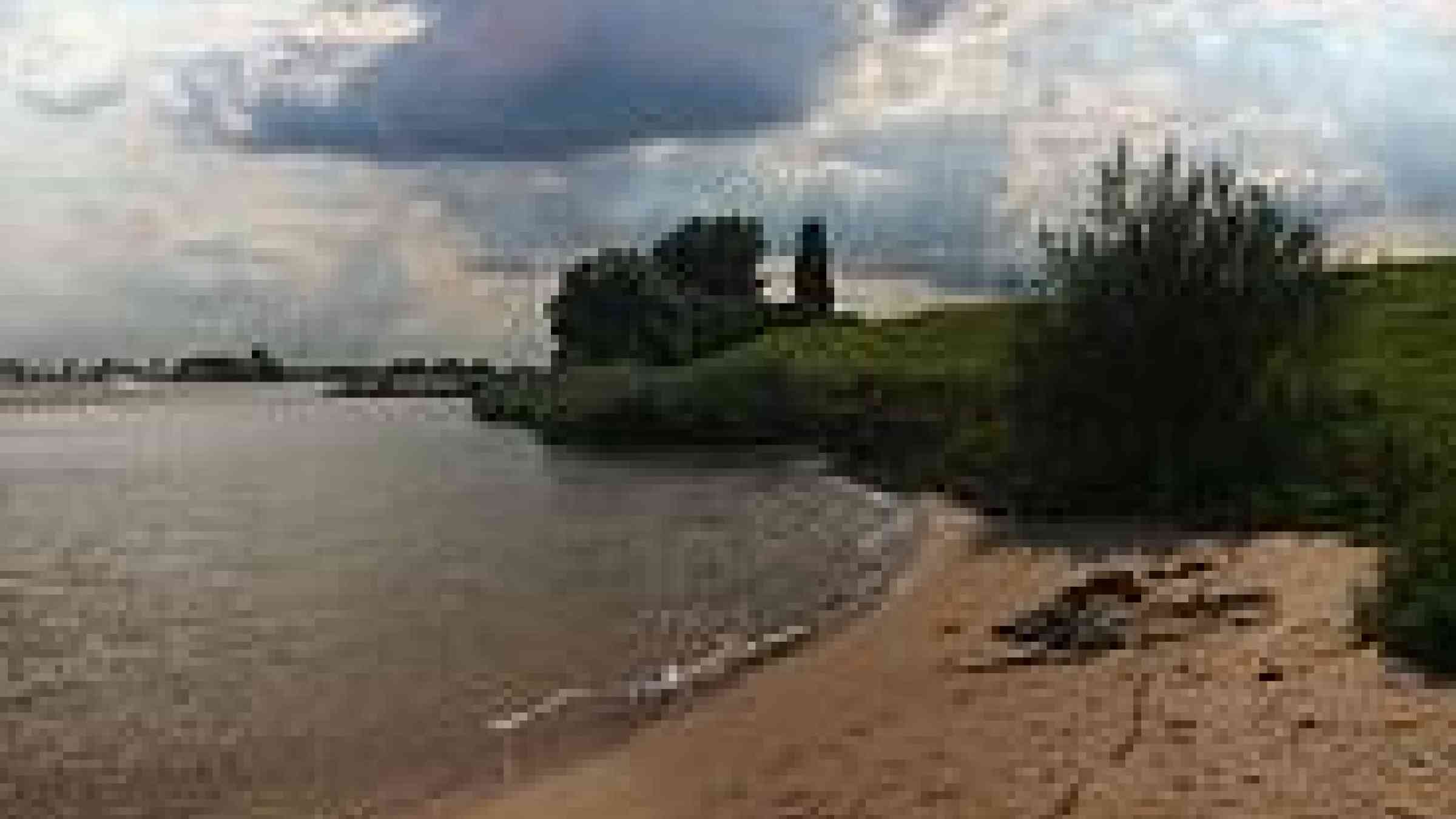Please help us improve PreventionWeb by taking this brief survey. Your input will allow us to better serve the needs of the DRR community.
UNEP backs ecosystem-based approaches for disaster risk reduction ahead of Rio+20

Photo by doegox CC CC BY-SA 2.0 http://www.flickr.com/photos/doegox/1116612468
With the risk of disasters increasing globally, the United Nations Environment Programme (UNEP) has underlined the central role of healthy and well-managed ecosystems in supporting the resilience of populations before, during and after disasters.
Natural disasters caused a record US$378 billion damage in 2011. While mortality rates from disasters are falling globally, thanks to improved early warning and preparedness measures, some 29,700 people still lost their lives in 302 disasters last year.
Addressing disaster risk through public investment decisions, such as those related to land-use planning and ecosystem management, was the focus of a UN General Assembly thematic debate held in New York yesterday by the President of the General Assembly to contribute towards the Rio+20 UN Conference on Sustainable Development.
Disaster risk reduction and resilience in the context of sustainable development have been identified as an emerging issue for the forthcoming Rio+20 conference.
Representatives from national and local governments, the humanitarian community, academia, the private sector and the UN system, including UNEP, took part in the one-day debate.
Addressing the General Assembly, the Director of UNEP's Division of Environmental Policy Implementation, Ibrahim Thiaw, said that investing in the appropriate management of forests, wetlands and other ecosystems could reduce disaster risks by serving as natural buffers against common hazards and supporting livelihoods.
"Applying ecosystem-based approaches for disaster risk reduction and climate change adaptation is a no-regret investment and is cost effective, because it impacts on the fundamental elements of the disaster risk equation, namely regulating hazards, controlling exposure and reducing vulnerability," Mr Thiaw said.
"The natural infrastructure provided by ecosystems is often more locally-accessible and less expensive to maintain than human-made, or 'grey' infrastructure, although built and natural responses could be combined as complementary solutions.
"Healthy ecosystems are the best 'insurance cover' for those who depend on natural resources for their livelihoods and ultimately provide multiple social, economic and environmental benefits regardless of whether a disaster occurs or not," he said.
Mr Thiaw cited a number of examples from around the world that demonstrate ecosystem-based approaches for risk reduction. In Burkina Faso, more than 200,000 hectares of drylands have been rehabilitated by local farmers through traditional agricultural and agroforestry techniques, resulting in an additional 80,000 tons of food production per year.
In Ethiopia, 1 million hectares of land have been rehabilitated and 600,000 hectares reforested through a sustainable land and water management programme (known as MERET), reducing drought risks and increasing household food security by 50%.
In western Jamaica, UNEP has quantified the role of coral reefs and seagrasses in protecting beaches against storm surges and erosion.
Among the cost-effective examples highlighted by UNEP were an investment of ?2.3 billion by the Government of The Netherlands to make "Room for the River" and re-establish floodplains, resulting in reduced flood risk for 4 million people along its main rivers.
The Swiss Government invests up to CHF 150 million per year in forest management which provides protection against mountain hazards, such as rockfalls, snow avalanches and landslides and is five to 10 times less costly than engineered measures.
The President of the 66th General Assembly session, H.E. Mr Nassir Abdulaziz Al-Nasser, opened the thematic debate. Other speakers included the Secretary-General's Chef de Cabinet, Susana Malcorra, and the Special Representative of the Secretary-General for Disaster Risk Reduction, Margareta Wahlström, as Moderator.
Key points from UNEP's contribution to the thematic debate included:
- There is a need to maximize shared priorities between the disaster risk reduction, climate change adaptation and sustainable development agendas, recognizing the important role of ecosystems in reducing risk and providing for human well-being. This integrated approach should be reinforced at the Rio+20 Conference and in the post-2015 sustainable development agenda, as well as other fora.
- Factoring environmental sustainability and risk reduction into public investments and development planning will achieve the necessary scale to effectively tackle key drivers of risk, protect against disaster losses, and support social and economic development.
- A number of environmental management instruments are available - such as integrated watershed management, protected area management and drylands management as well as environmental impact assessments - which could be applied to make public investments and sectoral development plans more sustainable and resilient.
- Strengthening national and local capacities remains a critical gap. The adoption of national policies and legislation provides the institutional and political mandate for implementing such integrated approaches. In some countries, appropriate policies and legislation are already in place, but the main problem lies in their enforcement and implementation.
The outcome of today's thematic debate, a President's Summary, will form a contribution to the Rio+20 process. The Rio+20 conference will take place in Brazil from 20-22 June 2012.
UNEP is a long-standing advocate of the critical role of ecosystems in reducing the risk and impact of natural hazards and is a core member of the Partnership for Environment and Disaster Risk Reduction (PEDRR). PEDRR is a global alliance that promotes best practices and informed policies on ecosystem-based disaster risk reduction and adaptation.
Through a new strategic cooperation with the European Union, UNEP will over the next three years be piloting ecosystem-based disaster risk reduction projects in vulnerable countries in Asia, Africa and the Caribbean, and documenting lessons learned to inform policies and scale-up efforts.
Explore further
Please note: Content is displayed as last posted by a PreventionWeb community member or editor. The views expressed therein are not necessarily those of UNDRR, PreventionWeb, or its sponsors. See our terms of use
Is this page useful?
Yes No Report an issue on this pageThank you. If you have 2 minutes, we would benefit from additional feedback (link opens in a new window).